ving 做状语
- 格式:ppt
- 大小:869.00 KB
- 文档页数:35
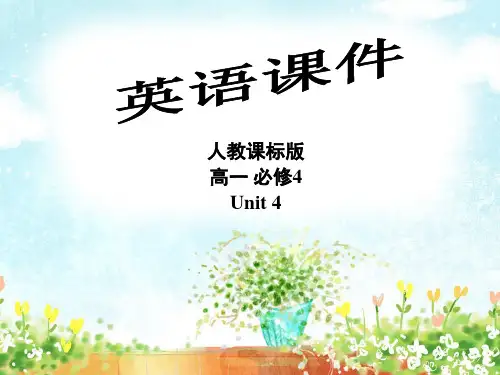
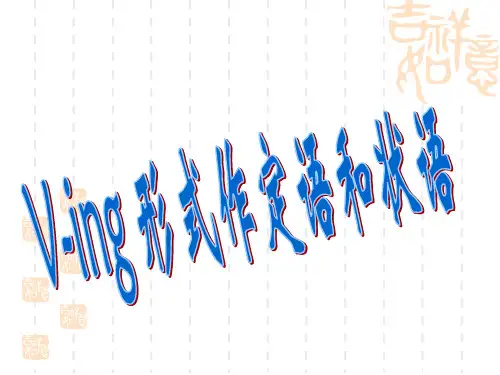

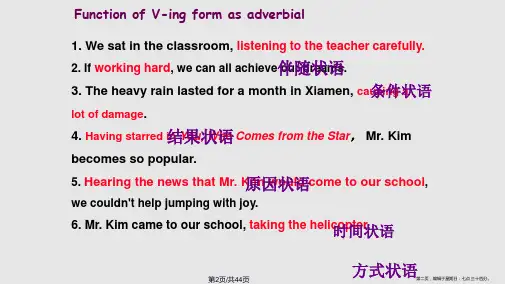
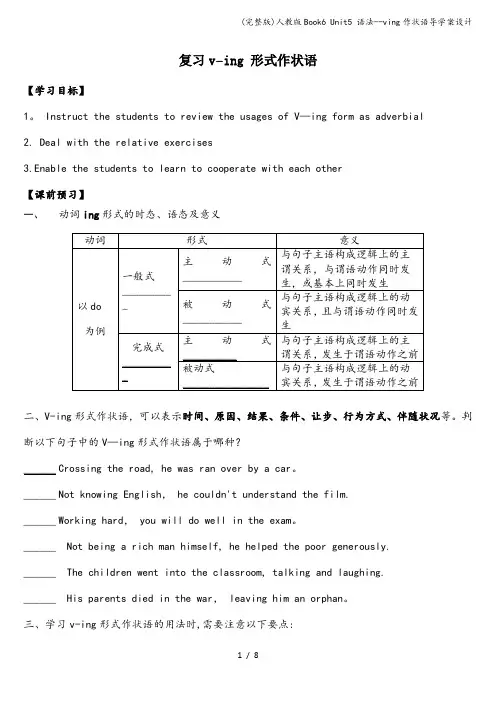
复习v–ing 形式作状语【学习目标】1。
Instruct the students to review the usages of V—ing form as adverbial2. Deal with the relative exercises3.Enable the students to learn to cooperate with each other【课前预习】一、动词ing形式的时态、语态及意义二、V-ing形式作状语,可以表示时间、原因、结果、条件、让步、行为方式、伴随状况等。
判断以下句子中的V—ing形式作状语属于哪种?______ Crossing the road, he was ran over by a car。
______ Not knowing English, he couldn't understand the film.______ Working hard, you will do well in the exam。
______ Not being a rich man himself, he helped the poor generously.______ The children went into the classroom, talking and laughing.______ His parents died in the war, leaving him an orphan。
三、学习v-ing形式作状语的用法时,需要注意以下要点:1)与过去分词作状语的区别: 一般来说,v-ing形式表示____________; 过去分词表示被动、完成。
The enemy fled in a panic, leaving behind a lot of dead bodies and weapons.Defeated and frightened, the enemy fled in a panic.2)分词(短语)作状语时,其逻辑主语必须与句子的主语_______.如果不一致,必须用独立主格结构来表示,也就是在分词前加上它的_______________。
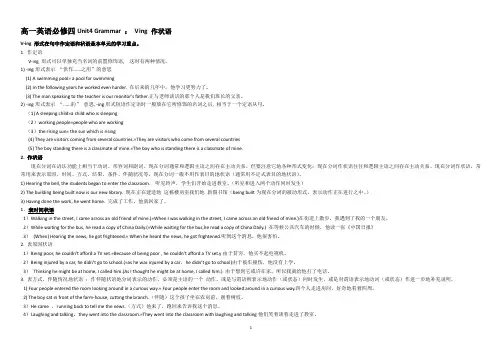
高一英语必修四Unit4 Grammar :Ving 作状语V-ing 形式在句中作定语和状语是本单元的学习重点。
1. 作定语V-ing 形式可以单独充当名词的前置修饰语, 这时有两种情况。
1) -ing形式表示“供作......之用”的意思(1) A swimming pool= a pool for swimming(2) In the following years he worked even harder. 在后来的几年中,他学习更努力了。
(3) The man speaking to the teacher is our monitor's father.正与老师谈话的那个人是我们班长的父亲。
2) -ing形式表示“......的”意思, -ing形式短语作定语时一般放在它所修饰的名词之后, 相当于一个定语从句。
(1) A sleeping child=a child who is sleeping(2)working people=people who are working(3)the rising sun= the sun which is rising(4) They are visitors coming from several countries.=They are visitors who come from several countries(5) The boy standing there is a classmate of mine.=The boy who is standing there is a classmate of mine.2. 作状语现在分词在语法功能上相当于动词、形容词和副词。
现在分词通常和逻辑主语之间存在主动关系。
但要注意它地各种形式变化:现在分词作状语往往和逻辑主语之间存在主动关系。
现在分词作状语,常常用来表示原因、时间、方式、结果、条件、伴随状况等。


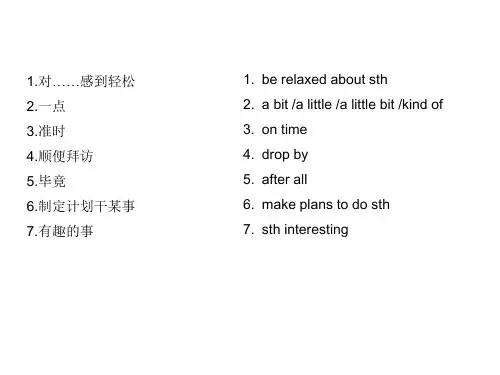

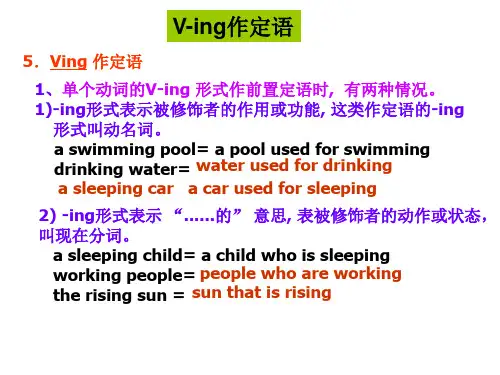
v-ing形式作状语v-ing形式作状语时,用于修饰某动词或整个句子,所表示的动作与句子主语构成逻辑上的主谓关系。
v-ing形式作状语时,可以单独使用,也可以在其前加上when,while,after,if,unless,although,though 等连词,表示时间、原因、条件、让步、结果、伴随、方式等。
1。
作时间状语Hearing this news,she got frightened。
听到这个消息,她感到害怕.Looking out of the window,I saw some children playing football。
Turning around , he saw a tiger running up.2。
作结果状语The boy ran even faster,reaching the school out of breath. 那个男孩跑得更快了,到达学校时累得上气不接下气了。
The child slipped and fell,hitting his head against the door。
Her husband died,leaving her four children。
They fired,killing many people in the street.3。
作伴随状语He stood by the window,watching people passing by his window。
He came running.She stood waiting for a bus.He sat there reading a book。
The students ran out of the classroom,talking and laughing。
4. 作原因状语Being a student,I must study hard. 作为一名学生,我必须努力学习。
V-ing形式作状语一. 功能:时间原因条件伴随方式让步结果不表目的1)v-ing 短语作时间状语,相当于when\ while\ as\ after\ until等引导的时间状语从句。
例如:Gathering around the fire, the tourists danced with the local people.Dina, having struggled for months to find a job as a waitress, finally took a position at a local advertising agency.Looking at my classmates' faces, I read the same excitement in their eyes.Having failed to reach them on the phone,we sent an email instead.Not realizing that he was in great danger,Eric walked deeper into the forest.Having waited in the queue for half an hour,the old man suddenly realized he had left the cheque in the car.When asked why he went there,he said he was sent there to be trained for a space flight.v-ing 短语作时间状语考点呈现如下几个特点:(1)一般式与完成式(2)引导词的连带出现(3)位于句首,有时句中2)v-ing 短语作原因状语,相当于because引导的原因状语从句。
例如:3)v-ing 短语条件状语,相当于if\ unless条件状语从句。